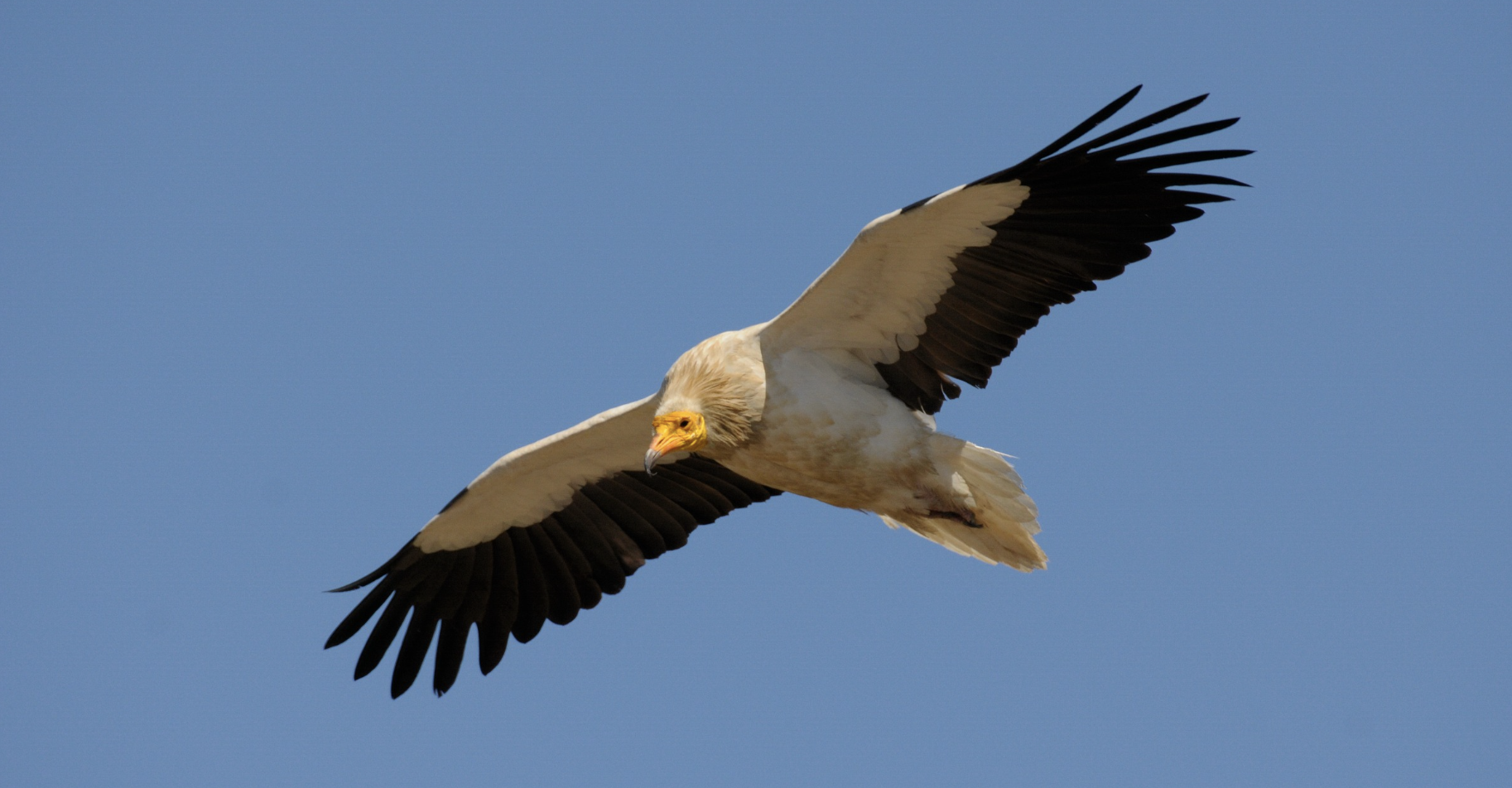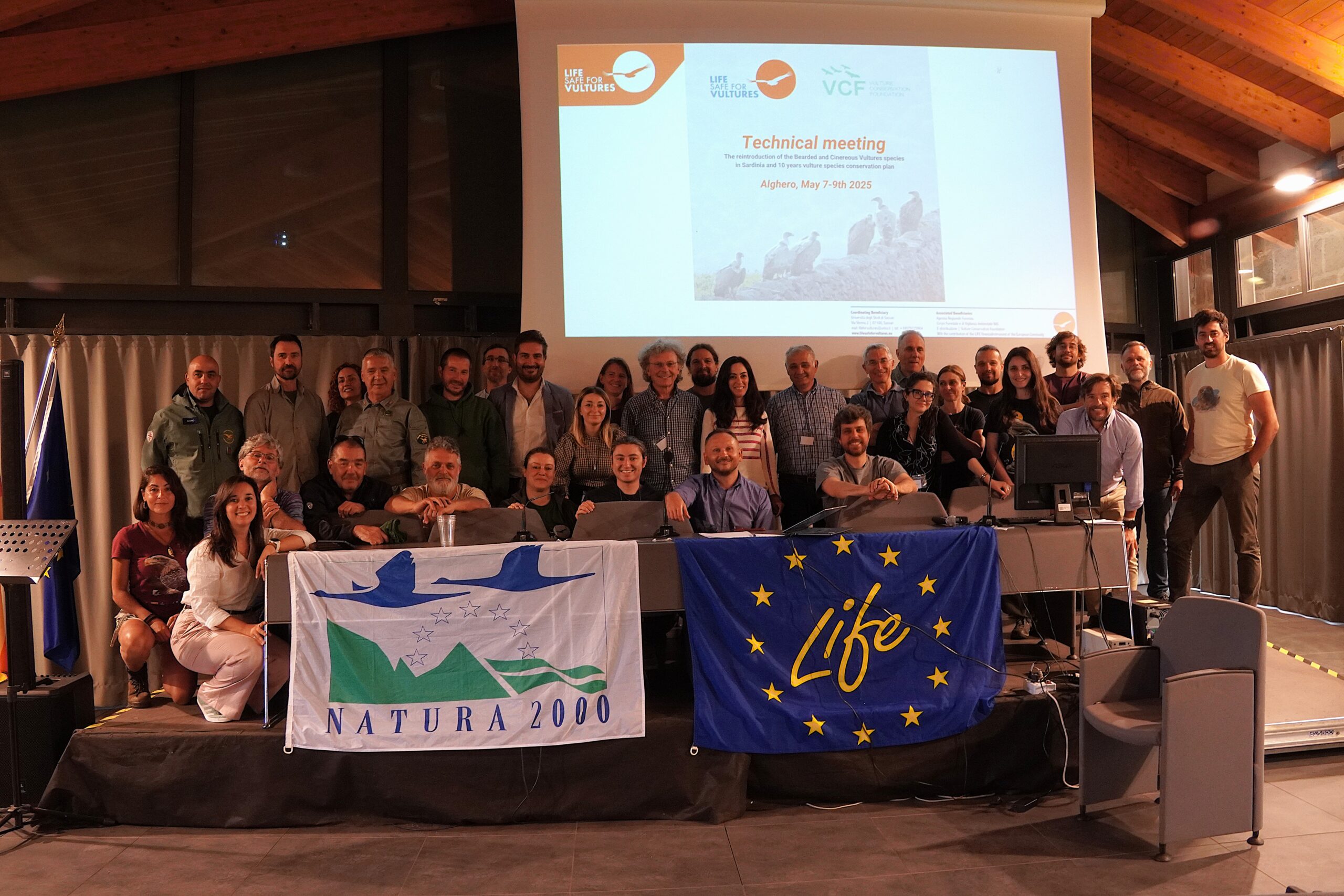
Conservationists discovered the oldest known living Egyptian Vulture in the wild thanks to long-term monitoring efforts!
Longevity record verification of wild Egyptian Vulture
Long-term monitoring plays a crucial role in understanding the ecology and conservation of long-lived endangered species, like the Egyptian Vulture, the only true long-distance migratory vulture species in Europe. Thanks to monitoring efforts that began a couple of decades ago, a conservation team managed to identify the oldest Egyptian Vulture in the wild. They first captured the male vulture in July 1993 in the Bardenas Reales, northern Spain, where he was probably two years old based on the plumage patterns. In June 2020, the same individual was recaptured as a territorial adult in the Catalan Pyrenees, 200 kilometres away, making the individual 29 years old at the time. According to a recently published article, this discovery broke the previous longevity record for an Egyptian Vulture in the wild.
Monitoring the oldest Egyptian Vulture with GPS technology
Nearly three decades ago, José Antonio Donázar remembers capturing 21 specimens to place identification rings, including the now oldest known wild Egyptian Vulture. This individual has never been seen again until June 2020, when another group of scientists, which included Antoni Margalida, recaptured it. After his last capture, the researchers installed a GPS tag on the male Egyptian Vulture named Doce, allowing them to track every step of its migratory journey. Even though he is currently 30 years old, Doce still migrates from the Pyrenees in Spain to Mauritania in Africa every year, a distance of 4,000 km that he covers in approximately 20 days. On 8 September last year, the Egyptian Vulture started his autumn migration towards his African wintering grounds, and six days later crossed the Strait of Gibraltar. Then, on 26 September, he reached his destination in the Sahel. Thankfully, he did not have any setbacks on his return to Europe at the end of February. Based on the migratory route of Doce, travelling back and forth every year, the researchers who monitor the vulture estimate that in his entire life he has traveled at least 166,535 km, the equivalent of circling the Earth 4.15 times.
Egyptian Vultures in Spain
All European vulture species live in Spain, Europe’s vulture stronghold. The Egyptian Vulture has two subspecies in Spain; the Peninsular subspecies is currently listed in the Spanish Catalogue of Threatened Species in the category of Vulnerable and the Canary Islands subspecies in the category of Endangered. Periodic censuses are carried out for these two subspecies by the Autonomous Communities in compliance with the Law on Natural Heritage and Biodiversity. Spain is home to the largest European population of Egyptian Vultures and is a global stronghold for the species with 1,490-1,567 pairs.
Source
Donázar, J., & Margalida, A. (2021). Longevity record verified in an Egyptian vulture. Frontiers In Ecology And The Environment, 19(3), 151-151. https://doi.org/10.1002/fee.2328



